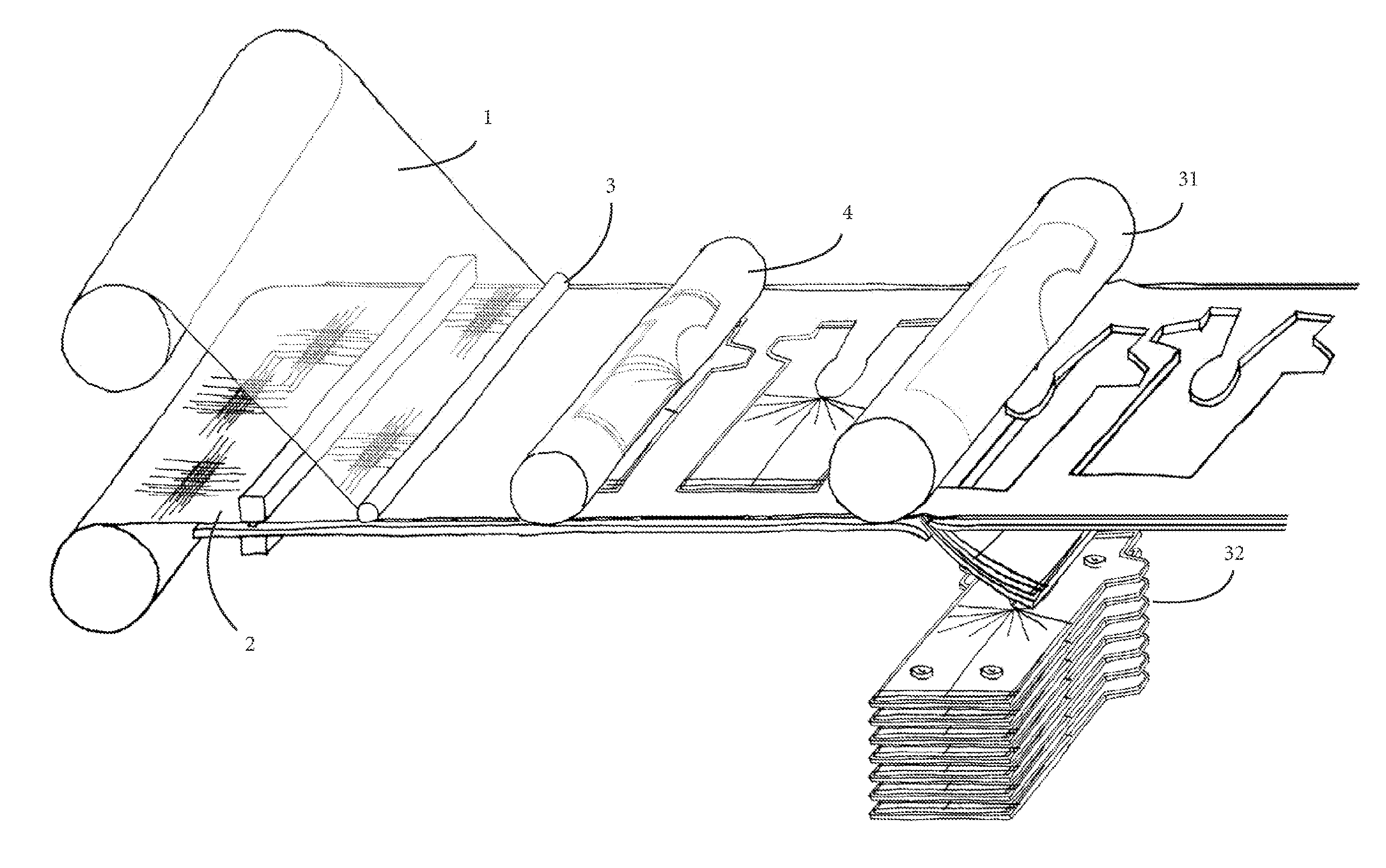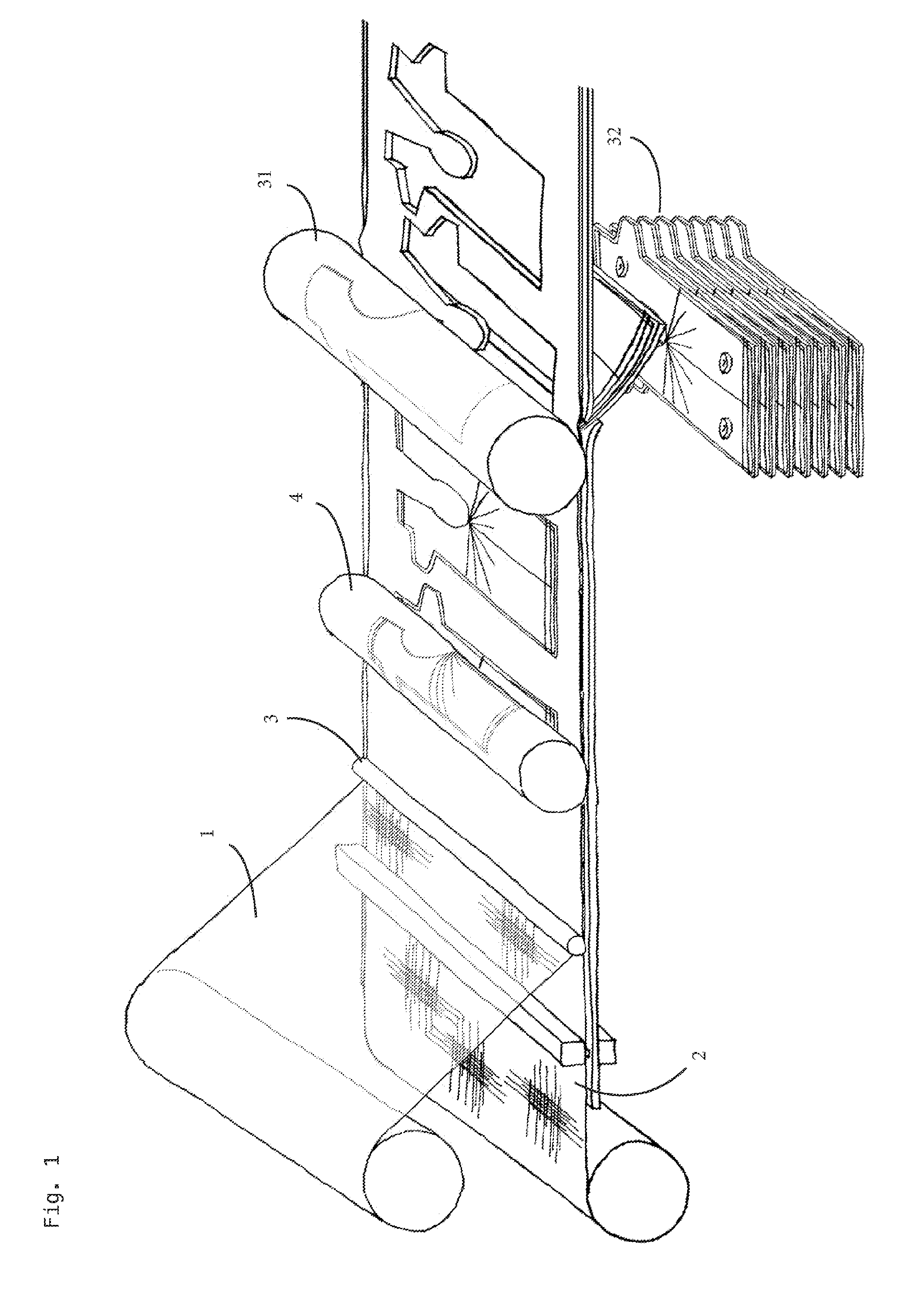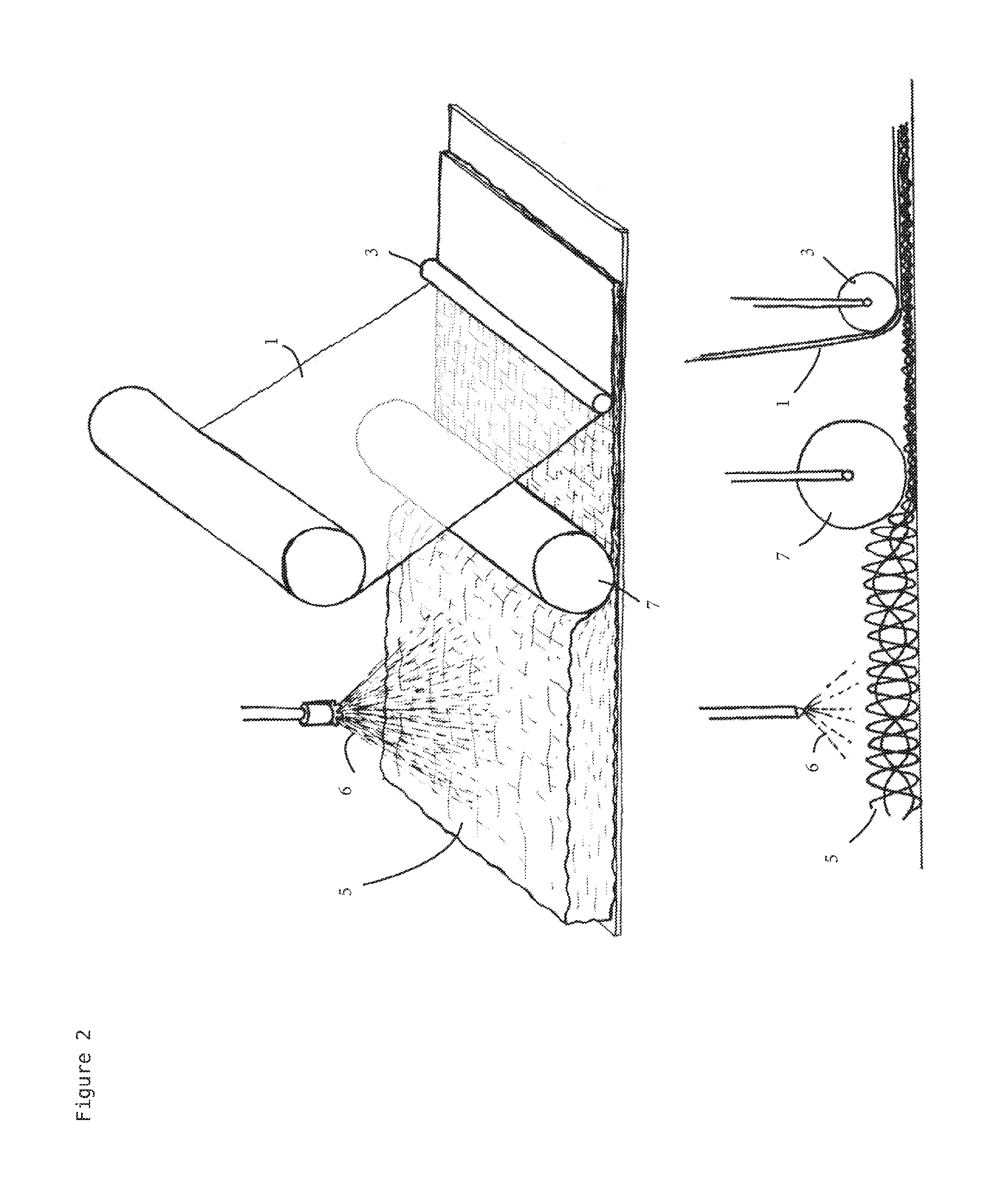Facilitating the assembly of goods by temporarily altering attributes of flexible component materials
a technology of flexible components and assembly, applied in the field of manufacturing goods, can solve the problems of unrealized opportunity for further manufacturing efficiency, a challenge for mechanically assisted manufacturing processes, and flexible materials, and achieve the effect of convenient manufactur
- Summary
- Abstract
- Description
- Claims
- Application Information
AI Technical Summary
Benefits of technology
Problems solved by technology
Method used
Image
Examples
example
[0253]To assemble, as an example, a pair of pants, the first step is to fuse the textiles with the posing agent.
[0254]After it's been added to the textile, the posing agent is then be textured as needed, by compressing it under an embossing cylinder. Next, any functional surface features (gripping and registration points, etc) are added to the roll by a pick and place mechanism and welding apparatus.
[0255]After the posing agent and surface features have been added, the garment pieces can be separated from the textile with a plotter or rolling die cutter. They're collected, sorted, and fed through to the assembly line.
[0256]Any pieces cut from alternate textiles, like linings or interfacings, can be prepared simultaneously or separately.
[0257]A robot grasps a large piece, comprising one of the pants legs, and places it onto the work area. The robot, or secondary robots, then place any additional pieces that need to be attached to the first piece, and can be attached while flat. This ...
PUM
| Property | Measurement | Unit |
|---|---|---|
| physical attributes | aaaaa | aaaaa |
| flexible | aaaaa | aaaaa |
| temperature | aaaaa | aaaaa |
Abstract
Description
Claims
Application Information
 Login to View More
Login to View More - R&D
- Intellectual Property
- Life Sciences
- Materials
- Tech Scout
- Unparalleled Data Quality
- Higher Quality Content
- 60% Fewer Hallucinations
Browse by: Latest US Patents, China's latest patents, Technical Efficacy Thesaurus, Application Domain, Technology Topic, Popular Technical Reports.
© 2025 PatSnap. All rights reserved.Legal|Privacy policy|Modern Slavery Act Transparency Statement|Sitemap|About US| Contact US: help@patsnap.com



